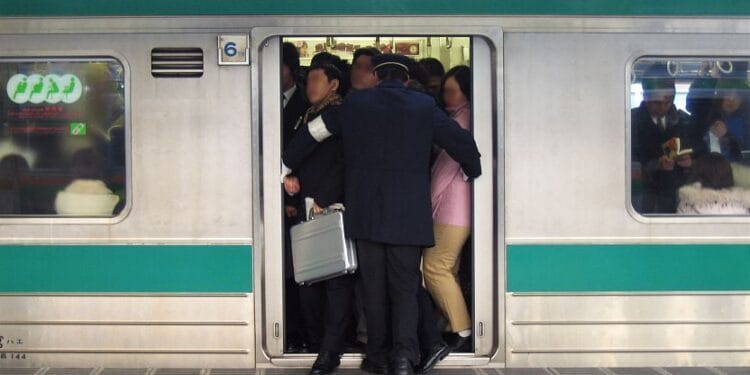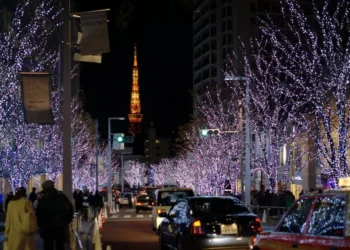No products in the cart.
Navigating Japan’s Rush Hour: How to Avoid Packed Trains and Travel Comfortably
Japan’s rail system is one of the most efficient and reliable in the world, but during Japan’s rush hour, it can become a crowded and challenging experience. The country’s major cities, especially Tokyo, experience intense commuter traffic during peak hours, with trains packed to the brim. For anyone planning to travel during these times, understanding which routes to avoid and knowing when to ride can make a huge difference in your experience. Here’s a guide to help you navigate Japan’s busiest train lines and keep your journey stress-free.
What is Rush Hour in Japan?
Japan’s rush hour refers to the periods when the majority of people are commuting to and from work or school. These times are most intense in the mornings and late afternoons. For Tokyo, rush hour starts as early as 7:00 AM and lasts until about 9:00 AM. In the evening, it typically begins around 5:00 PM and eases up by 7:30 PM. During these times, trains can become incredibly packed, particularly on the most heavily used lines.
The Yamanote Line: Tokyo’s Most Popular Yet Overcrowded Route
The Yamanote Line is one of Tokyo’s most essential and busiest train lines, looping around the city and connecting major districts such as Shibuya, Shinjuku, and Ikebukuro. During rush hour, particularly between 7:30 AM and 9:00 AM, the Yamanote Line can become extremely crowded. Trains heading to and from popular stations like Shibuya and Shinjuku are often jam-packed, making it difficult to find space.
If you can, try to avoid traveling on the Yamanote Line between 7:30 AM and 9:00 AM. If you absolutely have to take the line during Japan’s rush hour, consider boarding the train earlier, around 6:30 AM, or later in the morning, after 9:00 AM, when the crowds start to thin.
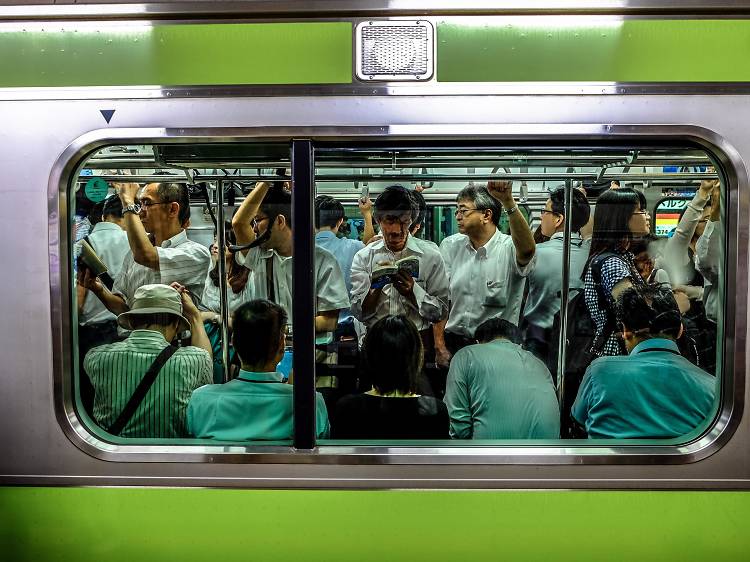
The Chuo Line: Crowded Commuter Trains
The Chuo Line is another major route that faces significant overcrowding, especially during the morning of Japan’s rush hour. This line runs from Omiya in the north to Tokyo Station in the south, passing through busy districts like Kichijoji, Nakano, and Mitaka. Trains on the Chuo Line heading into Tokyo can become packed between 7:00 AM and 9:00 AM. In the evening, trains going out of Tokyo during the 5:00 PM to 7:00 PM period are just as crowded.
If you need to travel on the Chuo Line, try boarding at a station farther away from the city center, like Kichijoji or Nakano, where the trains are less crowded. Alternatively, consider traveling during the off-peak period, either before 7:00 AM or after 9:00 AM, to avoid the worst of the crowds.
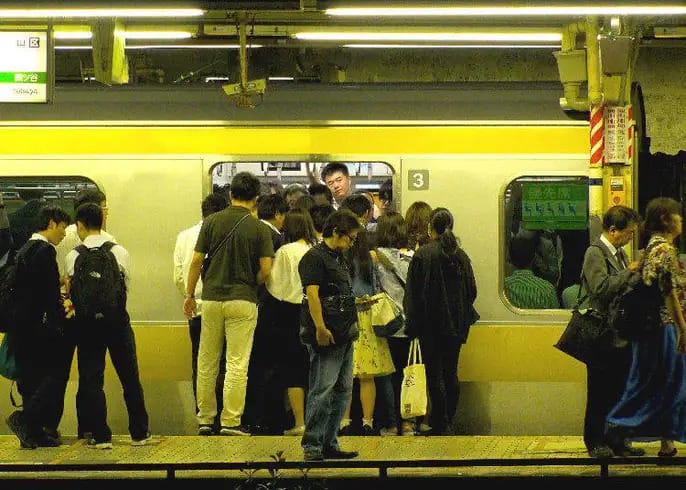
The Hibiya Line: A Hidden Crowded Gem
The Hibiya Line, running through Tokyo Metro, connects areas like Naka-Meguro, Kamiyacho, and Tsukiji, offering another critical route for many commuters. Between 7:00 AM and 8:30 AM, trains on the Hibiya Line can become uncomfortably packed. The line is often used by office workers heading to districts like Roppongi and Ginza, which contribute to the congestion.
To avoid the worst of the crowds, plan to ride on the Hibiya Line either before 7:00 AM or after 8:30 AM. If you’re traveling from a less crowded station, like Naka-Meguro, you might have a slightly more comfortable experience. Be aware that other lines, such as the Marunouchi Line, may offer a less crowded alternative if you’re heading to similar destinations.
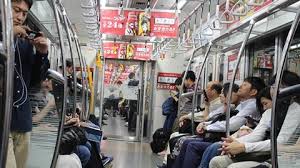
The Keihin-Tohoku Line: A Busy Commuter Route
The Keihin-Tohoku Line, which runs from Omiya to Yokohama, passes through some of the most congested areas in Tokyo, such as Ueno and Akihabara. During morning Japan’s rush hour (from 7:00 AM to 9:00 AM), trains on this line fill up quickly, especially as they approach Tokyo Station. Similarly, in the evening, the line heading out of Tokyo is highly congested with commuters returning home.
To avoid the packed trains on the Keihin-Tohoku Line, consider traveling before 7:00 AM or after 9:00 AM. If your schedule allows, use other train lines, such as the Yamanote Line, to reach your destination.
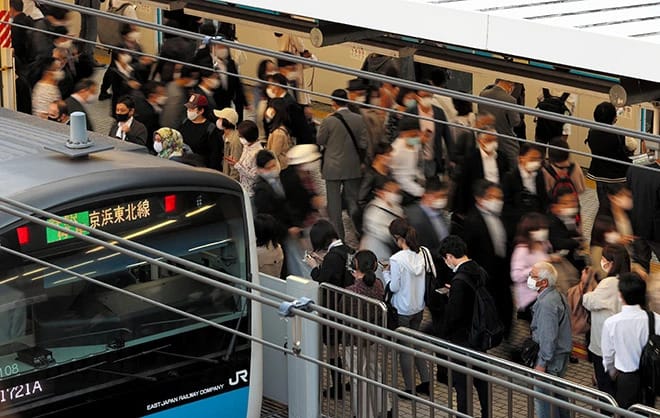
Off-Peak Hours: The Ideal Time to Travel
If you can adjust your schedule, off-peak hours are the best time to avoid overcrowded trains. Off-peak times typically occur after 9:00 AM and before 5:00 PM. During these hours, you’ll find trains much less crowded, and traveling will be much more comfortable. If you’re heading to a less popular district or a tourist destination, you’ll have an even easier time finding space on the trains.
In general, try to plan your trips around the busiest times and take advantage of the less crowded periods. If you have the flexibility to adjust your commute or sightseeing time, traveling during off-peak Japan’s rush hour time can make a huge difference in the quality of your experience.
Avoiding Transfers During Rush Hour
Transfers during Japan’s rush hour can make your commute even more stressful. The more transfers you have to make, the more likely you are to get stuck in crowded stations and trains. If possible, plan your route so that you minimize the number of transfers. Many of Tokyo’s train lines, including the Tokyo Metro, offer direct routes that will take you straight to your destination without requiring a transfer.
Minimizing transfers will help you avoid the chaos that can occur when switching between different lines, especially during rush hour when stations can get particularly crowded.
Tips for Comfort During Japan’s Rush Hour
Even if you end up on a packed train, there are a few strategies that can help you make the journey more comfortable. For example, try to stand near the doors or at the ends of the train cars, where there is generally a little more space. Avoid standing in the middle of the car, where the crowd is densest.
Another option is to take advantage of the Green Car (first-class) if your train has them. These cars tend to be less crowded and offer a quieter, more comfortable ride. Though there is an additional fee for the Green Car, it may be worth the extra cost if you’re trying to escape the crush of the standard cars during rush hour.
Conclusion: Plan Ahead for a Stress-Free Commute
Navigating Japan’s rush hour trains can be a challenge, but with the right planning, you can minimize the stress and discomfort. Avoid the busiest times, such as the early morning rush between 7:30 AM and 9:00 AM, and the evening rush between 5:00 PM and 7:00 PM. If possible, travel during off-peak hours, when trains are less crowded and more comfortable. By planning ahead, checking schedules, and considering your options, you can enjoy a much more pleasant experience commuting in Japan.


